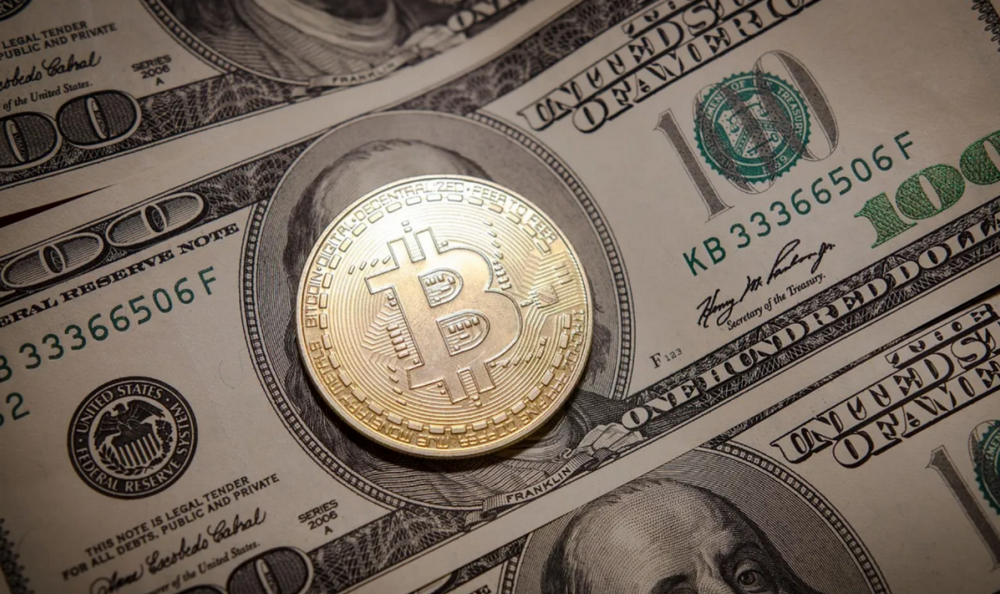Viewpoint | Blockchain is a "self-fulfilling promise" computer
Source of this article: Orange Book , original title "Infrastructure for the next ten years: a computer that self-fulfills its promise | predictor weekly report # 68"
Of all the definitions of blockchain, Chris Dixon's statement may be the most interesting. He believes that the blockchain is a computer, which is essentially no different from other computers. The only special thing is that this kind of computer can fulfill its promise (blockchain is a computer that can make commitment. [1] )
What is the use of a computer that can honor the promise? It will be executed according to the rules preset by the code, and will continue to run as expected, so you can safely hand over "money" to this computer to manage, or even leave the entire financial system to it. If you are a developer, you can also "host" your website and applications to this computer, it is like new cloud computing- although it does not have to be cloud computing. Because the promise can be fulfilled, in theory, it is also appropriate to entrust the entire court system to this computer.
Here, everything is actually quite sci-fi. A machine that can take care of the fund itself, a "rich" computer, a pile of codes that define the law, sounds like what will happen in the futuristic world. This new world has a little prototype now. When we try to host the entire financial system to this computer that can fulfill its promises, DeFi is born; when we try to host websites and applications to this computer, the new The Internet (new internet) was born; when we tried to entrust the court to this computer, a new digital home [2] was also born-countries, companies, digital nomads, DAO organizations …
- Using Messari's on-chain data to select currencies, what investment targets have we found?
- Research Report | Central Bank Digital Currency Watch: Looking at the "Super Currency" Blueprint through Patents
- Hangzhou accelerates the creation of the "National Digital Governance First City", creating favorable conditions for accelerating the layout of blockchain and other industries
But before realizing all this, let us return to reality first. When all these fantasies about the future are far from happening, what does a computer that can fulfill its promise mean compared with ordinary computers? When I wrote three archaeological articles on computer history [3] in the past, I had a strong feeling: Blockchain is a new open source movement (crypto is the new open source). This computer, which can fulfill its promises, means new infrastructure.
A16Z has a similar view:
In the past open source movement, developers shared each other's intellectual achievements by sharing "libraries" (lib), reducing duplication of effort, and achieving code reuse. The library can be regarded as some small pieces of code, they can complete a certain function, if you need this function, copy these codes to your own project in the form of import, so as to save yourself from reinventing the wheel trouble.
The biggest difference between the new open source movement in blockchain and the way to share library code is that the protocol exists as a smart contract, and it directly provides services to the outside world. Developers who need to use a certain protocol to complete a set of functions can simply call the contract service directly, eliminating the process of copying the library code and then building. The protocol is a bit like plug and play.
In other words, the library essentially shares a design blueprint. With this blueprint, you know how to build a road and a bridge, and the smart contract-based protocol in the blockchain world is more like a road and a A bridge itself, it can directly provide services, eliminating the cost of rebuilding and deployment according to the blueprint.
Based on this, "the self-fulfilling promised computer-the new infrastructure-the new open source movement" is the development path of the blockchain in my eyes. We are currently in the stage of building new infrastructure. This "new infrastructure" is a vast project, and it is far from entering the blowout period and harvest period of various innovations, technologies and applications in the middle and late stages of the open source movement. The construction of blockchain infrastructure may need to last ten years or maybe a hundred years . The road ahead is far longer than the entire industry imagines.
New product
FightTheVirus.World
http://fightthevirus.world/ [4]
@ 沙 滴 时间: COVID-19 is sweeping the world, and billions of people have to live at home. What can the Crypto community do to help this battle? Verifiable credentials based on autonomous identities provide a useful tool for combating viruses. Medical institutions can issue users with credentials such as test results, and users can use digital wallets to manage it and provide proofs where needed. At present, the project has attracted more than fifty organizations and more than one hundred participants. If you are interested, you can open the web page to view the details and join the appropriate working group.
Articles worth reading
Zou Chuanwei: The logic and mechanism of the blockchain applied in the post-processing of financial transactions
https://mp.weixin.qq.com/s/NVXAviUQLCsubRtnUTOWvw
@Leon: Tokenizing securities assets looks simple, but it is actually very complicated. We need to understand the traditional financial solutions before we can further design a new system based on blockchain.
Bilinear accumulator for cryptocurrency enthusiasts
https://decentralizedthoughts.github.io/2020-04-02-bilinear-accumulators-for-cryptocurrency/ [5]
@ 郭宇: The accumulator is a cryptographic tool that supports "member certification" and "non-member certification". This article explains in depth the accumulator based on bilinear mapping, which can replace Merkle Tree in some occasions as a set of promises. This accumulator utilizes a common reference string similar to the Groth10 paper and KZG promise, and can achieve O (1) complexity proof. This team of ours had studied for a while in the early days of the zkPoD project, but later gave up because it had to deal with millions of sets, which proved that time was really difficult to optimize. The blockchain community has recently begun to pay attention to this cryptographic tool again. It has some special advantages, and can be compatible with some ZKP schemes. It can also be used in some particularly suitable scenarios to replace the traditional brainless Merkle Tree usage.
The application of blockchain technology in the German automotive industry
https://medium.com/coinmonks/analysis-of-the-current-use-and-future-possibilities-of-blockchain-technology-in-the-german-a291b5c2f98c [6]
@ 李 画: The automobile industry is one of the most important industrial sectors in Germany. Because of this, it needs continuous development and innovation to maintain its vitality. Blockchain is one of the new technologies that the industry is trying to use. In this article, the author introduces eight different segments of the automotive industry that use blockchain technology, as well as all the blockchain projects of the four major companies BMW, Volkswagen, Porsche and Daimler. More detailed information.
The danger of inflation
https://seekingalpha.com/article/4335368-danger-of-inflation [7]
@Hope: Investors facing possible inflation or even hyperinflation can take refuge in physical gold if they can find it. Gold mining shares are also good. Real estate can offer help when inflation soars. Cryptocurrencies might help as the government cannot inflate them.
I do n’t know when to start. Digital currency has become an alternative to traditional value storage assets (SoV) such as gold and real estate on professional investment websites like Seeking Alpha.
(Finish)
References
We will continue to update Blocking; if you have any questions or suggestions, please contact us!
Was this article helpful?
93 out of 132 found this helpful
Related articles
- Will borrowing in Ethereum DeFi reduce PoS security? Vitalik Buterin: It doesn't exist!
- Global financial markets are picking up, bitcoin has become a "sprint black horse" and "long-term upstart"
- Reverting HT moving bricks arbitrage process: "IQ tax" trap in the encrypted world
- Decisive battle in milliseconds, detailed explanation of digital currency high-frequency trading strategy
- From the digital currency, I saw the dawn of inclusive finance-Zhao Guodong commented on "Digital Currency"
- Babbitt's weekly elections halving is approaching, the market is accelerating recovery, is the halving effect coming?
- Babbitt Exclusive | Forty-five-day currency crisis in 35 days, halving or changing the three "Bitcoin" patterns






